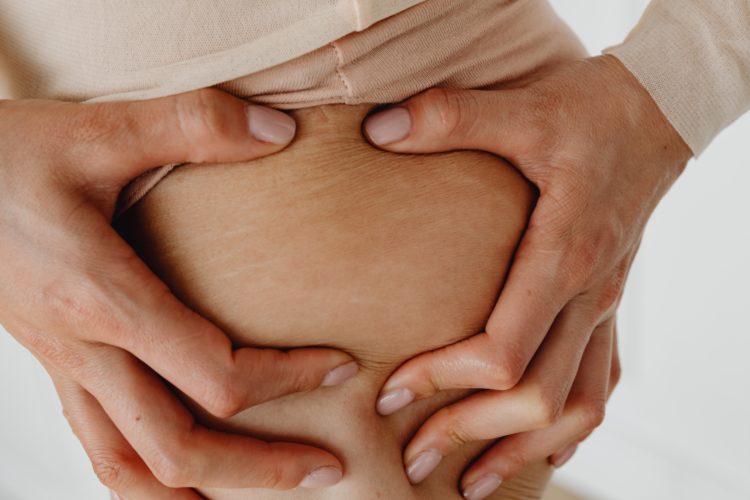+ ONE Safe And Natural Way On How to Get Rid of Scars
Whether it’s because of a reckless childhood or unfortunate circumstances, it’s not uncommon to have scars on your body. That said, scars are a SCAR-Y subject for many people, especially if you’re self-conscious over scars on your face and body and looking on how to get rid of scars.
Some people opt for scar removal surgeries to get rid of large and prominent scars. While they CAN drastically reduce the appearance of scars, you may not want to deal with some of the more undesirable side effects. In this article, we’ll go into some of the most important factors when considering scar removal surgery and other natural alternatives to reduce scarring.
How Are Scars Formed?
Scars come in all shapes and sizes, but they are ultimately your body’s way of repairing the damage. Your skin repairs itself by growing new collagen fibers to pull together the wound and fill in any gaps caused by the injury.
A scar is composed of fibrous tissue, but there’s no uniform way to how it presents itself. Some look flat, sunken, or lumpy, while others can be itchy or painful. Factors like the size and depth of the wound, the location, the time it took to heal, and how inflamed it is. These will all determine how your scar looks.
If your injury is deep in the dermis area or inflamed, you’d get a prominent scar that’s not likely to go away by itself. Your scars might get worse if you’re a chronic scab picker since your skin would continuously send collagen to repair the wound you made.
Recent researches have suggested that people of specific genetic characteristics might be more susceptible to different types of scarring. People with highly melanated skin are 5 to 15 times more susceptible to keloid scars than lighter skin color. Age may also influence scarring, older individuals tend to scar less than younger people.
Types Of Scars
Before we get into the different ways to heal a scar, you should know how each type of scar is different. This allows you to figure out what caused the injury in the first place and how to treat them best. Dealing with pregnancy scars? Read out post, “How To Reduce the Appearance of Scars and Stretch Marks After Pregnancy” to find out how to effectively reduce their appearance.
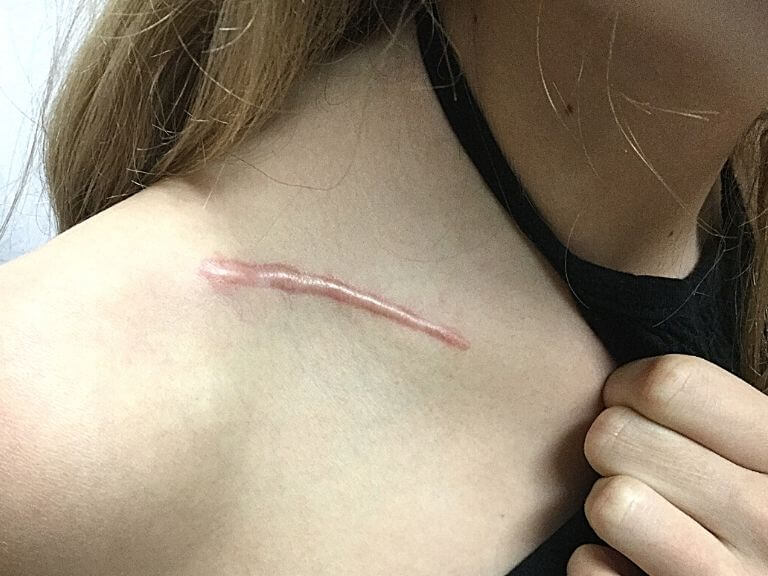
· Keloid scars
A keloid scar is an overgrowth of scar tissue caused by too much collagen production. Since your body keeps producing collagen to heal the wound, the scar tends to keep growing as well. It becomes raised on the skin and presenting as a darker color.
Removing a keloid scar may cause it to grow back stronger than ever because it started as your body’s attempt at healing itself. With these types of scars, your best bet is moisturizing oils that may help reduce the size and appearance of the scar.
· Hypertrophic scars
Like keloid scars, a hypertrophic scar is the result of an excess of collagen on the wound. But they are much more contained in the original wound spot as they don’t extend beyond the boundary of the initial injury.
It’s one of the easiest types of scarring to treat, as you can use multiple treatment options. The most popular and effective treatment method is by injecting corticosteroids on the scar tissue to flatten and soften the tissue.
· Contracture Scar
If you’ve been burned before, you most likely have a contracture scar. These scars can restrict your movement as they are formed when your skin shrinks. They may go further than skin deep, affecting your muscles and nerves.
Contracture scarring is notoriously challenging to deal with, and your only option may be surgical procedures.
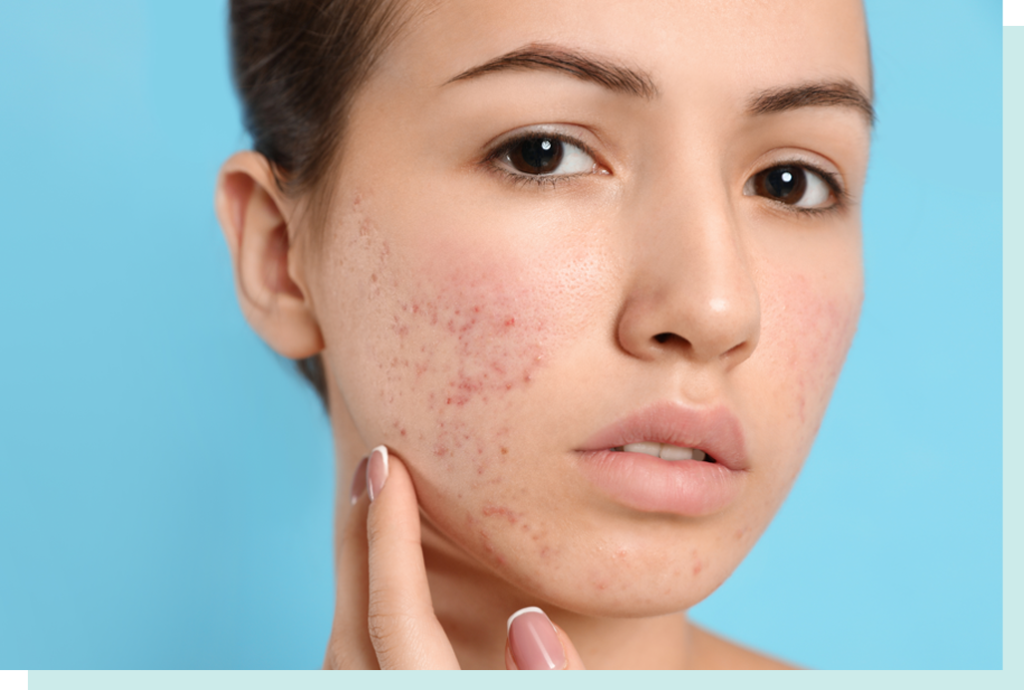
· Acne scars
Like all scars, acne scars are formed when a breakout damages the tissues beneath your skin surface. Many of us are guilty of picking at our pimples to make them go away faster, making them worse. You’d also most likely have long-term scarring if your acne was cystic or infected.
The best way to treat acne scars is to avoid them altogether by adopting a well-balanced skincare routine. Other than that, lactic acid, retinoids, and salicylic acids are popular acne scar reduction products.
· Healed scars
Healed minor wounds naturally leave a raised line that gradually flattens and fade away with time. Although they typically leave behind a faint reminder, they tend to be primarily unnoticeable and not painful at all.
Is Scar Removal Surgery The Best Method To Remove Scars?
Scar removal surgery is an umbrella term for different surgical methods designed to make your scars as inconspicuous as possible. Some of these surgeries include:
- Laser resurfacing: Used to minimize wrinkles and fine scars by burning away damaged skin with high-energy light.
- Punch grafts: Used to remove scarred skin by punching a hole in the skin and replacing it with unscarred skin.
- Surgical scar revision: Used to remove the entire scar surgically and then rejoin the skin. This method creates a new scar that is less obvious than the previous one.
Scar removal surgeries are excellent for intense and prominent scarring since they can permanently reduce scarring and improve your skin textures. They can give you a new lease on life if you experience pain and movement restrictions caused by contracture scars.
The truth is that as useful as they are, scar removal surgeries are usually not worth the risk unless you have a nasty scar.
For one, they can cause hyper or hypopigmentation, which leads to more unevenness on your skin tone. These revisions tend to have extensive recovery times as they are considered invasive procedures. They would also set you back a few thousand dollars to boot.
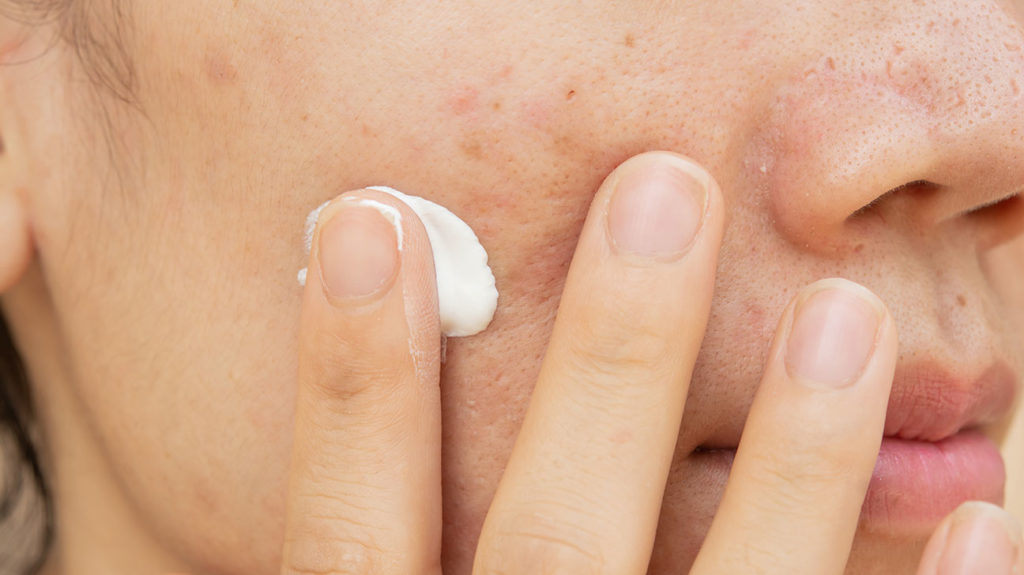
If your scars aren’t too big, you can opt for minimally invasive procedures like:
- Dermabrasion: Used to minimize small scars and minor skin irregularities by removing the top layers of the skin with an electrical machine.
- Chemical peels: Used to treat sun-damaged skin, irregular pigmentation, and superficial scars. This is done by removing the scar with a chemical application at the top layer of your skin.
- Cryosurgery: Used to reduce the size of your scars by freezing the top skin layer.
That said, there’s always a risk of infection or other side effects when going through these procedures. Not only that, but these treatment options also tend to be expensive and not very accessible to the average Jane.
5 Organic Home Remedies That Help Reduce Scarring
It’s natural if you don’t want to deal with the harmful side effects and recovery times of scar removal surgeries. People have been trying and testing different home remedies for scar removal for ages, and we’re reaping the benefits of it. And don’t forget to check out our blog post, “8 Best Scar Cream Ingredients Found in Nature” for the most natural ingredients to look for in a scar cream.
· Black seed oil
Known as Nigella sativa, the black seed is a relatively common medicinal plant with antibacterial, anti-viral, and anti-inflammatory properties. Some studies have found it to be able to speed up and improve wound healing. Using this long-term may even out pigmentation or act as acne prevention.
· Honey
More than a staple in your kitchen, you can use honey to clean a wound with its antibacterial properties. Not only that, but it can accelerate wound healing and reduce the potential for scarring.
· Aloe Vera
Thanks to its antibacterial and anti-inflammatory properties, aloe vera is a great, inexpensive treatment option for various skin ailments, including scar reduction and psoriasis. Not only that, but its high moisture content keeps your skin hydrated, soft, and supple. You can use it in tandem with other treatments to accelerate your healing.
· Coconut oil
Coconut oil is a skincare celebrity—for a good reason. It boosts collagen production, which makes your skin more elastic and helps reduce fine lines. It’s rich in omega-3 fatty acids and forms a hydrating barrier that protects your skin as it heals.
· Lemon juice
Although its effectiveness is primarily anecdotal, lemon juice is celebrated as a good home remedy for acne scars. Because of its antibacterial properties, it reduces the appearance and redness of acne scars. Lemons are packed with vitamin C, which is an essential anti-aging vitamin for collagen building.
Can Scars Be Completely Removed?
The answer is no—no matter the type of scars and treatment method, you won’t be able to get rid of your scar completely.
That’s because new cells created from the base of your epidermis gradually work their way up to the surface of their skin. As they do they push the older epidermal layers out. However, skin cells grow by replicating genetic material, meaning the cells copy the scar tissue if the scar is deep enough. As a result, nothing would change much on the surface of the skin.
That said, you can diminish your scars to the point where none could be seen easily with the proper treatment and products.
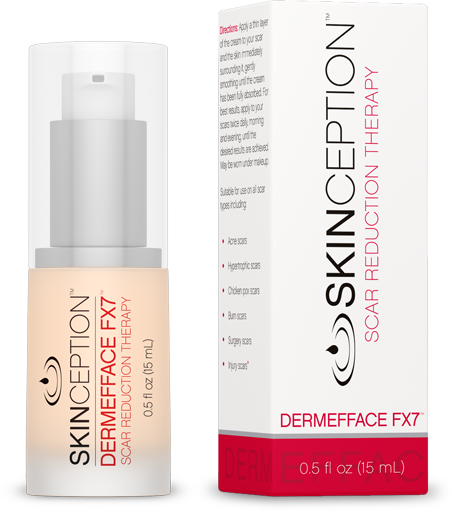
Best Scar Reduction Cream: Dermefface FX7 by Skinception
If you’re in the market for a more effective and targeted approach for scar treatment, you won’t go wrong with Dermefface FX7 by Skinception.
When healing a scar, your skin renews its cells from the epidermis upwards. It pushes away dead skin cells and scar tissue to form a new layer of unbroken skin. Dermefface FX7 Scar Reduction Therapy works the same way.
It works with your skin’s regular 28-day regeneration to accelerate healing and push scar tissue to the surface. This allows you to then slough damaged skin off. Not only that, but it stimulates your skin to produce more normal cells to replace scarred cells.
This cream uses seven clinically proven ingredients, ten powerful antioxidants, and five super moisturizers. This natural scar reduction cream diminishes discoloration, flattens, and smoothes uneven, bumpy scars in just four weeks! With consistent usage, you might find your scars disappear like they were never there.
Dermefface FX7 Scar Reduction Therapy works with all types of scarring. This includes existing or developing scars, acne scars, burn scars, hypertrophic scars, and surgery scars.
Not only that but Dermefface FX7 is protected under Leading Edge Health’s 67-day money-back policy. You can return the product for a free refund if it doesn’t work as fast as you want it to. But when it works for you, you’re in for a lifetime of scar-free, flawless skin—you have nothing to lose!

